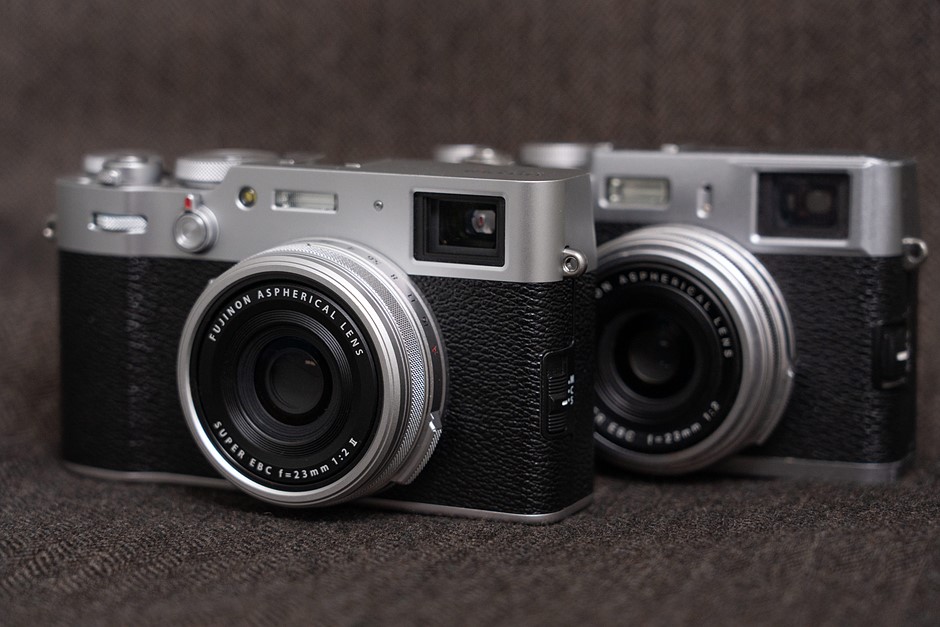
Each iteration of X100 retains its family look but there’s been constant evolution throughout the series
Photo: Richard Butler
The word kaizen has increasingly come into the vocabulary of camera enthusiasts. It’s often been used in conjunction with Fujifilm but is increasingly applied to any company that adds features during firmware. I think this focus on firmware misses the point and risks obscuring the real meaning of the word.
Kaizen is the name of a Japanese manufacturing philosophy that essentially says that the production process always has room for improvement. So far as I can tell, it was first used in relation to cameras by a blogger who saw parallels with Fujifilm’s continued work on the firmware of the original X100, even after it had been superseded.
Fujifilm’s commitment to the X100 was admirable and arguably helped relieve other manufacturers’ concerns that firmware updates would signal that their products had previously been somehow unfinished or imperfect.
Kaizen is not just about firmware
But while it’s definitely a welcome trend across the industry, this focus on firmware doesn’t really represent the full concept of kaizen.
Writing a history of the X100 series and having to address whether the X100V users should upgrade made me realize that it’s not Fujifilm’s firmware updates that exemplify the kaizen concept: it’s the series as a whole.
The X100VI is better than the V in a number of ways: a higher resolution sensor and in-body image stabilization being the most obvious, but there are a host of little changes, too. Do these make it worth upgrading from the previous version? That’s hard to say, because the X100V was already a very good camera, but if you don’t own the V, then the newer version is definitely the one to go for.
The small details are a big deal
It’s a small detail, but just swapping the positions of AF-S and AF-C make the camera a little easier to use. And these little changes have happened throughout the camera, across the series, some of them made in firmware but others requiring different hardware.
Photo: Richard Butler
Looking back, this has always been the case. It’s best seen in the small details: the way the X100S switched the order of Single and Continuous AF on its focus selection slider, to make the more useful mode more accessible. Or in the way the means of selecting the AF point has been constantly refined and updated: button hold and cardinal point of the rear dial, button press and cardinal point, assigning the four-way buttons to AF positioning and, finally, a joystick and touchscreen. Each implementation better than the last.
Those incremental changes made with every refresh of the camera represent the kaizen concept every bit as much as firmware updates
Look at the smaller changes made on the X100VI, for instance. Some redesign was necessary to accommodate the IBIS unit, but beyond this, the hand grip was been reworked after much prototyping. It meant Fujifilm had to create entirely new tooling for the new model but also means the camera just fits more comfortably in the hand. Likewise the rear tilt screen: it would have been easier to use the existing cradle, but the new version that pulls out a little further from the viewfinder is just a little better for waist-level shooting.
Those little, incremental changes that have been made with every refresh of the camera, represent the kaizen concept every bit as much as firmware updates and the retrospective addition of a film simulation.
Sometimes kaizen improves your next camera
From above, the changes are a little more apparent: the simplified top-plate of the V and VI, the addition of an ISO dial, which originally needed to be held in the up position as you were rotating it but now clicks up and down, the third-stop increments on the aperture ring…
Photo: Richard Butler
From a practical point of view, no company has the R&D resources to continue to support all its existing models, and many cameras are achieving a level of polish and refinement that means additional features would risk simply being semi-worthless clutter (don’t get me started on multi-shot high res modes).
As an owner of an X100 series camera, I’ve definitely appreciated the feeling that Fujifilm wanted to keep supporting me, when firmware 2.0 was released. But that support can’t last for all models, forever. So I appreciate that the kaizen philosophy means I will be able to buy a camera that’s better than my current one could possibly be, when the time comes to upgrade.






